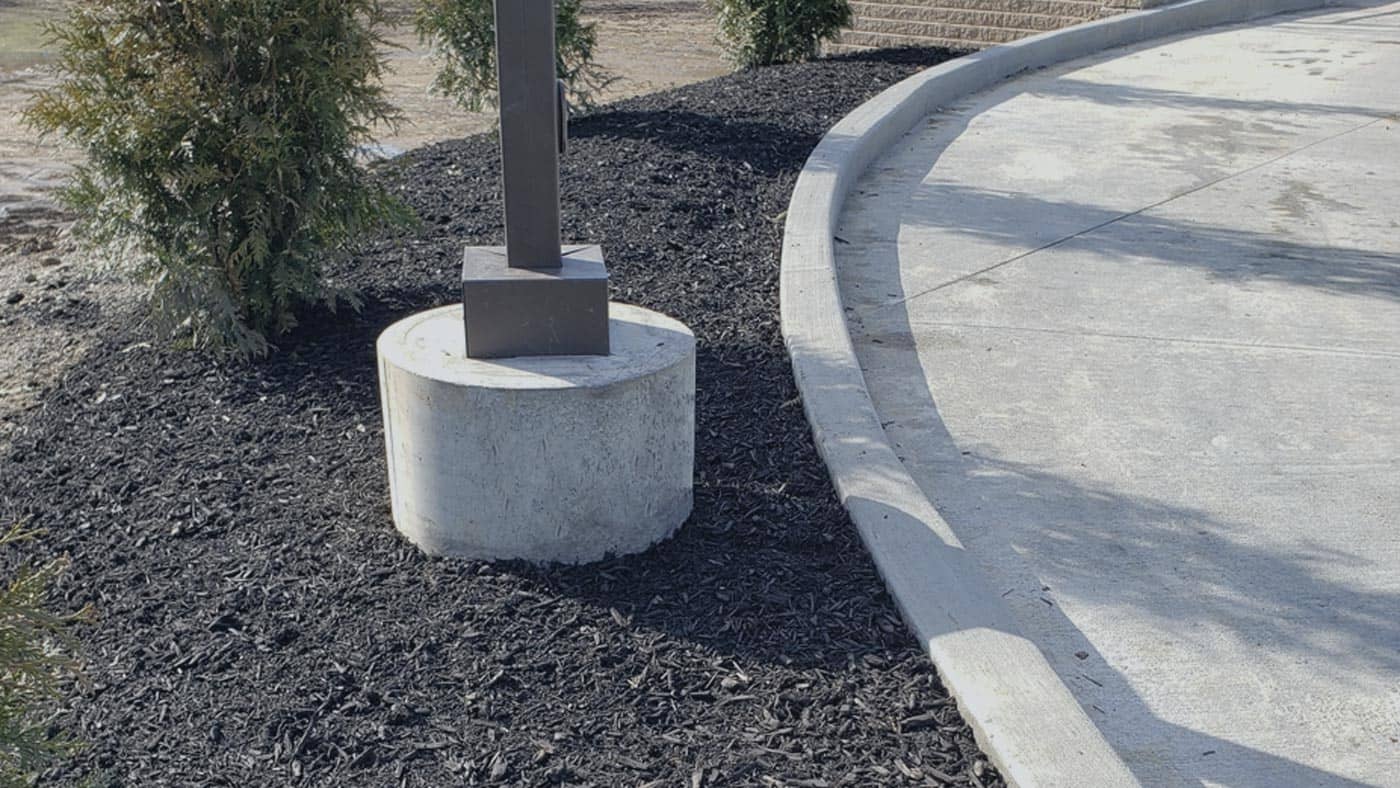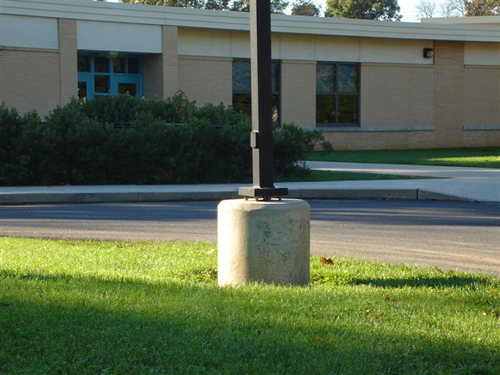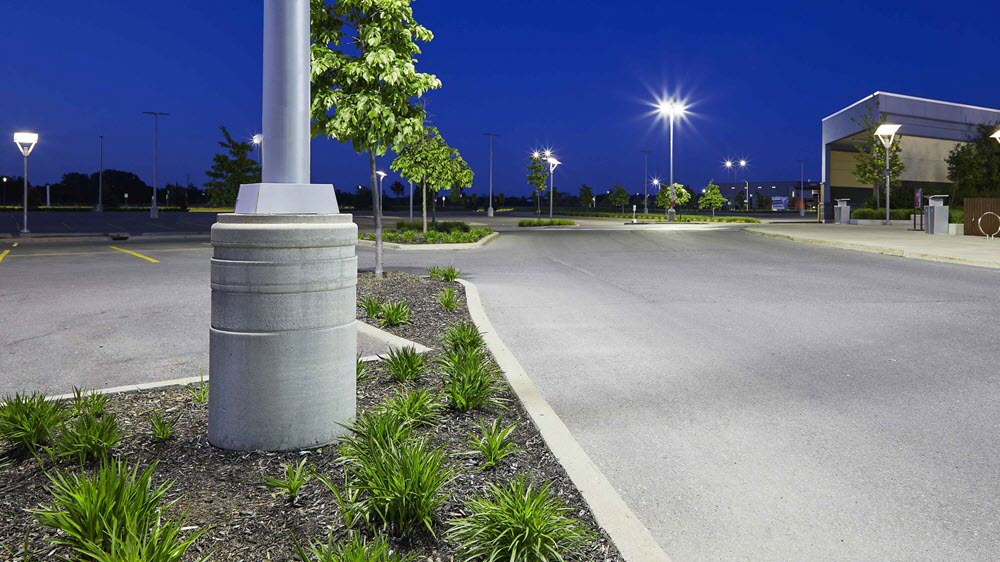Flood Light Base Servicesin Rochester Hills MI
Comprehensive Flood Light Installation for Enhanced Safety
We Are Locally Owned & Operated For Over 37 Years
Contact Us Today!
We Serve Businesses In And Around The Following Cities:
About Flood Light Base Services
Introducing the Illuminating Marvel of Commercial Properties: Flood Light Bases
Located in the heart of Michigan, the city of Rochester Hills is a vibrant community filled with bustling commercial properties. As the city continues to grow, so does the need for appropriate lighting solutions that cater to safety, aesthetic appeal, and operational efficiency. Herein lies the importance of the primary topic of our discussion – flood light bases. This comprehensive guide sheds light on the vital role of these unsung heroes in illuminating Rochester Hills’ commercial buildings and the benefits they offer to businesses.
Flood Light Bases: Laying the Groundwork for Brighter Business Environments
The critical role of flood light bases – acting as the foundation of outdoor lighting systems – often goes undervalued. These powerful mechanisms not only support flood lights, which cast a broad spectrum of luminosity across wide spaces, but also ensure their optimal functioning, making commercial premises safer, more attractive, and more productive.
Flood light bases are incorporated into the architectural design, offering a reliable platform for flood lights to perform to their full potential. A robust and suitably installed flood light base guarantees safe and stable positioning of flood lights, resulting in lower maintenance costs and extended lifespan for your outdoor lighting system. As such, the strategic selection and installation of flood light bases are significant performance determinants of your flood lights. It’s certainly more than just choosing good flood light basins.
Benefits of a Well-Installed Flood Light Base
Notably, a well-installed flood light base offers numerous invaluable benefits to Rochester Hills’ commercial establishments. Lighting is a key aspect of safety, highlighting potential threats and instilling a sense of security among employees and visitors. An optimally functioning flood light base ensures consistent and adequate illumination, reducing the risk of accidental injuries or mishaps due to poor visibility. Additionally, strategic lighting adds aesthetic appeal, further promoting a property’s image and brand.
The application of flood light bases transcends mere tidal lighting duties. In the events sector, for instance, flood light bases facilitate the strategic positioning of lights that set the tone for events. This effective use of lights can turn a simple event into an unforgettable experience. Commercial success in Rochester Hills, therefore, is illuminatingly linked to the effective implementation of flood light bases.
Real-World Impact in Rochester Hills
In our city, the need for robust lighting systems is paramount. Retail giants, warehouses, and sports complexes are among the many types of commercial properties that have greatly benefited from investing in high-quality flood light bases. Given the scope of these properties, the interplay of flood lights and their bases is crucial in many ways; from functional practicalities to artistic expressions.
Sport complexes in Rochester Hills, for instance, may not often mention flood light bases. Their contribution, however, is evident in the well-illuminated fields, enhancing nighttime vision for both players and spectators. In warehouses, flood light bases uphold safety standards by ensuring even distribution of light. This prevents unlit areas that could hinder operations or pose safety threats. Meanwhile, retail spaces leverage strategic lighting for both security and showcasing their products in the most appealing way.
A closer look at these practical realities sheds light on how essential flood light bases are to the functioning of commercial properties. It also underscores why professional installation and maintenance services, such as those provided by D&J Contracting, are a commendable investment. With their emphasis on quality, safety, and customer satisfaction, D&J Contracting is an ideal partner for businesses looking to leverage the benefits of superior flood lighting systems.
Entrusting Your Commercial Property Lighting to Authorities
With the profound impact of flood light bases on safety, aesthetics, and business operation, their installation and maintenance should never be an afterthought or handed to the inexperienced. It’s prudent for businesses to entrust their lighting systems to experts like D&J Contracting.
D&J Contracting brings impeccable expertise and an armada of high-quality flood light bases and basins, perfectly tailored to meet unique lighting requirements. With their practical insights, meticulous attention to detail, and unwavering commitment to quality, D&J Contracting provides a comprehensive service that, from inception to implementation, champions efficiency, safety, and customer satisfaction.
The Beacon at the End: A Final Reflection
As the lights dim on this guide, we appreciate the invaluable role of flood light bases in the commercial property landscape of Rochester Hills. The importance of these architectural assets cannot be overstated, and neither can the advantages of entrusting their installation and maintenance to industry experts like D&J Contracting.
Take a moment to consider your own commercial properties: Are they as radiant, safe, and efficient as they could be? Perhaps it’s time to cast a new light on your business premises and entrust your flood light base solutions to the seasoned professionals at D&J Contracting. After all, a brighter business environment could be just a call away.
Flood Light Base Services Gallery


Call Us Today to receive your Free Quote for
Flood Light Bases in Rochester Hills
Serving: Rochester Hills, Michigan

About Rochester Hills, Michigan
Prior to European settlement, the area now known as Rochester Hills was inhabited by Native Americans, namely the Potawatomi. The Potawatomi depended on the area’s abundant water sources, such as the Clinton River and Paint Creek, to grow crops, fish, and travel. They resided here until the 1807 Treaty of Detroit caused them, along with the Odawa, Wyandot, and Ojibwe peoples, to cede their land in Southeast Michigan.
The first European settler was James Graham who arrived in 1817. Graham and his family reached the area by following trails created by the Sauk Native Americans. Avon Township was organized in 1835. Rochester incorporated as a village within the township in 1869. The township adopted a charter in 1948 under the Home Rule Act. Also in 1948 a post office was established under the name of Brooklands for the area between Auburn Road and Hamlin Road just to the west of Dequindre Road.
In 1966, village residents voted to become the City of Rochester, effective in February 1967. As a result, Rochester residents no longer had to pay property taxes to the township, as it was now a separate municipality.
In 1967, Avon Township filed a petition to become a city. In January 1968, township voters approved the petition to move forward with seeking city status. Three proposed city charters were voted down by residents, the first in March 1969, the second in May 1970, and the third in September 1971. The city of Rochester then sought to annex all of the township, which was unanimously denied by the Michigan Boundary Commission. In 1972, petitions were filed to consolidate Avon Township and Rochester. In April 1974, the consolidation petition lost by 350 votes in the township, while passing by four votes in Rochester. In May 1974, Rochester’s petition to annex 2.2 square miles (5.7 km) of Avon Township was approved by the Michigan Boundary Commission, depriving Avon Township of its largest taxpayer. The township became Avon Charter Township in August 1978. Court challenges to the 1974 annexation continued until November 1981, when the township was ordered to surrender the annexed property. An impending annexation request from the City of Troy, due south, for 300 acres of southeast Avon Township brought the cityhood question to a crisis.
In May 1984, township voters approved a city charter. On November 20, 1984, Avon Township became the City of Rochester Hills. The name of the new city was put to a vote, with the other choice being “Avon Hills.” The name “Rochester Hills” won by a landslide with voters, based on the area’s historical ties to Rochester and the rolling hills in the area. Township Supervisor Earl E. Borden became the first mayor of Rochester Hills.
In June 2024, there was a mass shooting in the city.
According to the United States Census Bureau, the city has a total area of 32.91 square miles (85.24 km), of which 32.82 square miles (85.00 km) is land and 0.09 square miles (0.23 km) (0.27%) is water.
Rochester Hills is bordered to the north by Oakland Charter Township along Dutton Road, to the south by the city of Troy along South Boulevard, to the east by Shelby Township in Macomb County along Dequindre Road, and to the west by the city of Auburn Hills along part of Adams Road. Rochester Hills is also partially bordered by the city of Rochester to the east. Elevations in the city range from 690 feet (210 m) above sea level in the southeastern portion of the city to 1,032 feet (315 m) in the northwestern section.
- Stony Creek is a neighborhood on the northeast end of the city on the border with Rochester at 42°41′46″N 83°06′43″W / 42.69611°N 83.11194°W.
- Yates is on the boundary with Rochester and Shelby Township, Oakland County (42°40′25″N 83°05′45″W / 42.67361°N 83.09583°W ; Elevation: 669 ft./204 m.).
| Census | Pop. | Note | %± |
|---|---|---|---|
| 1990 | 61,766 | — | |
| 2000 | 68,825 | 11.4% | |
| 2010 | 70,995 | 3.2% | |
| 2020 | 76,300 | 7.5% | |
| U.S. Decennial Census | |||
As of the 2020 census, there were 76,293 people, in 28,766 households, residing in the city. The population density was 2,359.9 inhabitants per square mile (911.2/km). The racial makeup of the city was 79.6% White, 12.8% Asian, 3.7% African American, 2.9% from two or more races, and 0.1% Native American. Hispanic or Latino of any race were 5.6% of the population. 19.8% of the population was foreign-born.
There were 28,766 households, and the median household income was $99,666. 4.2% of persons were living in poverty. 77.4% of residents lived in owner-occupied housing units.
Between 2000 and 2010, the Asian population in Rochester Hills increased to almost 10% of the community’s population, a 61% increase from the 2000 figure. It grew to 12.8% in 2020.
As of the census of 2010, there were 70,995 people, 27,578 households, and 19,308 families residing in the city. The population density was 2,163.2 inhabitants per square mile (835.2/km). There were 29,494 housing units at an average density of 898.7 per square mile (347.0/km). The racial makeup of the city was 89.1% White, 2.5% African American, 0.2% Native American, 4.5% Asian, 0.7% from other races, and 1.9% from two or more races. Hispanic or Latino of any race were 1.1% of the population.
There were 27,578 households of which 33.2% had children under the age of 18 living with them, 59.2% were married couples living together, 8.1% had a female householder with no husband present, 2.8% had a male householder with no wife present, and 30.0% were non-families. 25.7% of all households were made up of individuals and 10.3% had someone living alone who was 65 years of age or older. The average household size was 2.53 and the average family size was 3.08.
The median age in the city was 40.9 years. 23.7% of residents were under the age of 18; 7.7% were between the ages of 18 and 24; 24.6% were from 25 to 44; 30.3% were from 45 to 64; and 13.8% were 65 years of age or older. The gender makeup of the city was 48.4% male and 51.6% female.
Rochester Hills has a mayor-council government. The Rochester Hills City Council consists of seven Council Members: four district members and three at-large members. They are elected to four-year terms and, due to term limiting, can serve no more than two terms for a maximum of eight years. However, there are no limits on how many times the mayor can run for re-election as a write-in candidate.
Rochester Hills does not have a police department, so the city’s police services are provided by the Oakland County Sheriff’s Office. The 52nd District Court Division Three is also located in Rochester Hills.
In the 2020 United States presidential election in Michigan, 23,173 (50.67%) votes went to Joseph Biden and 21,680 (47.4%) votes were cast for Donald Trump.
Federally, Rochester Hills is split between Michigan’s 8th congressional district, represented by Democrat Elissa Slotkin, and Michigan’s 11th congressional district, represented by Democrat Haley Stevens. However, as of 2023, Rochester Hills will be appended to the Macomb County-centered Michigan’s 10th congressional district.
Rochester Community Schools serve most of the city. Rochester Adams High School, Rochester High School, and Stoney Creek High School are in Rochester Hills. The city also hosts college and graduate-level programs in various disciplines at Oakland University and Rochester Christian University.
Some portions of the city, however, are in the Avondale School District. Much of the ASD portion of Rochester Hills is zoned to Deerfield Elementary School, also within the city. Other portions are zoned to Auburn Elementary School in Auburn Hills and Woodland Elementary School in Troy. All ASD residents are zoned to Avondale Middle School in Rochester Hills and Avondale High School in Auburn Hills. The Meadows School, Avondale Academy, and the ASD transportation department are all in Rochester Hills.
City services include Rochester Hills Public Library. (The neighboring City of Rochester and Oakland Township contract with the City of Rochester Hills to permit their residents’ use of the library.)
The Japanese School of Detroit, a supplementary school for Japanese citizens of school age, at one time had its administrative offices in the former Oakland Steiner School in Rochester Hills.
Call Us Today to receive your Free Quote for
Flood Light Bases in Rochester Hills
Related Services in Rochester Hills, Michigan
We Serve Businesses In The Following Zip Codes:
48007, 48015, 48021, 48026, 48035, 48036, 48038, 48042, 48043, 48044, 48045, 48046, 48047, 48048, 48050, 48051, 48066, 48071, 48080, 48081, 48082, 48083, 48084, 48085, 48088, 48089, 48090, 48091, 48092, 48093, 48098, 48099, 48225, 48230, 48236, 48310, 48311, 48312, 48313, 48314, 48315, 48316, 48317, 48318, 48397